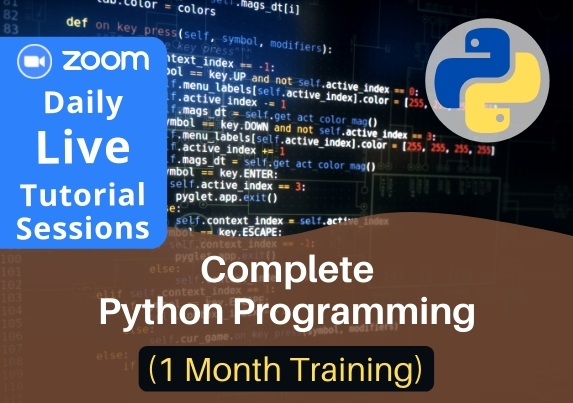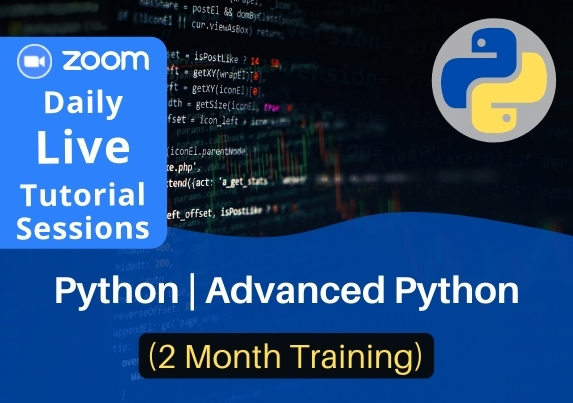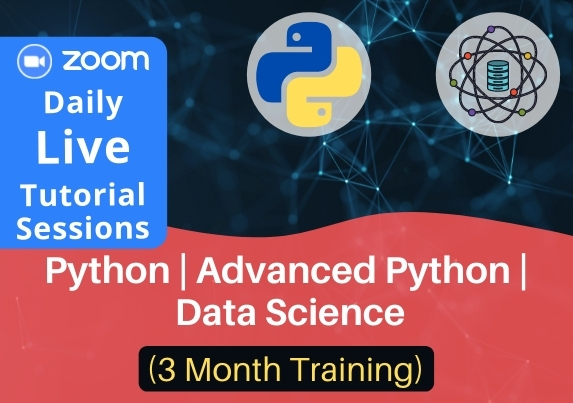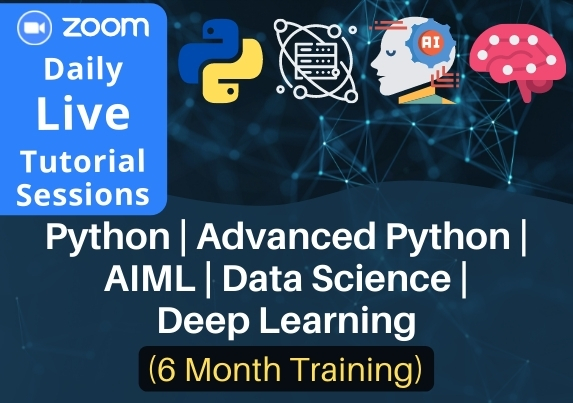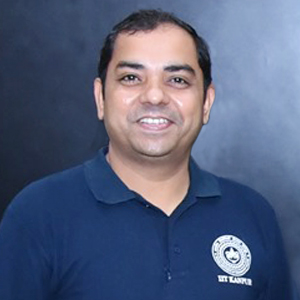About
Join the certified courses from Prutor.AI, IIT Kanpur this Summer, and get the opportunity to utilize your summer vacation by learning new technology at the comfort of your home.
This online live training program is designed in such a way that it makes learning by building projects super easy for you.
Get in Touch
-
1-6 months of learningDuration
-
Online zoom sessionsTraining mode
-
Lab accessPrutor
-
Project workingReal-life projects
-
CertificateFrom Prutor@IITK
Certificate
IIT Kanpur was the first institute in India to start a Computer Science Department.
IIT Kanpur has a rich base of alumni in this space who have made a remarkable impact around the world (Dr. Arvind Krishnan, CEO IBM, Dr. Rajeev Motwani, Google mentor, Dr. Narayan Murthy, Founder Infosys, Mr. Amit Agarwal, CTO Amazon to name few)
While education is impacted, some of the institutions continue to do well as they have realized the importance of practice. There is no substitution to practice. While other jobs are impacted due to COVID 19 coding jobs are still in demand.
To solve the problem of teaching introductory programming to Engineering students, Dr. Amey Karkare, Computer Science Department at IIT Kanpur has developed software - Prutor, that is being used at IIT Bombay, IIT Goa, IIT Kanpur, IISC Bangalore, IISER Bhopal, and EICT Academy IIT Kanpur to teach programming to more than 40,000+ students.
We believe in the practical and industry-based approach of teaching at Prutor.ai
The batch starts from 08th June, 2021
How will your training work?
1
Attend Online Classes
2
Learn with Hands-on practical
3
Do the project work
4
Give the final quiz
5
Get a certificate in Python, Advanced Python, Data Science, AIML
COURSE CURRICULUM - (Python)
- Introduction
- The Programming Cycle for Python
- Getting started
- Variables and simple data types
- Elements of Python
- Type Conversion
- Expressions
- Assignment Statement
- Arithmetic Operators
- Operator Precedence
- Boolean Expression
- Introducing list
- Working with lists
- For Loop
- Nested Loops
- Nested Loops
- Tuples
- Unpacking Sequence
- Lists
- Mutable Sequences
- List Comprehension
- Sets
- If statements
- Conditional
- Conditionals (Continued)
- Expression Evaluation
- Float Representation
- Dictionaries
- User input and loops
- Break and Continue
- Function
- Parts of A Function
- Execution of A Function
- Keyword and Default Arguments
- Scope Rules
- String
- Indexing and Slicing of Strings
- More Slicing
- Higher Order Functions
- Sieve of Eratosthenes
- Abstract Data Types
- Classe
- Modules
- Importing Modules
- Classes
- Special Methods
- Class Example
- Inheritanc
- Inheritance and OOPS
- Files and Exceptions
- File I/O
- Exceptions
- Testing your code
- Assertion
- Iterators
- Recursion
- Simple Search
- Estimating Search Time
- Binary Search
- Estimating Binary Search Time
- Recursive Fibonacci
- Tower Of Hanoi
- Sorting
- Selection Sort
- Merge List
- Merge Sor
- Higher-Order Sort
COURSE CURRICULUM - (Advanced Python)
Introduction to SQLite database
- Overview
- Create Database
- Create Table
- Drop-Table
- Insert query
- Select query
- Delete and Update query
- WHERE AND & OR Clause
Regular Expression
- RegEx Module
- Match object
- RegEx Functions:search, findall,sub
- Match at the beginning or end
- Metacharacters
- Special Sequences
GUI Programming with Tkinter
- Introduction
- Saying Hello with Labels
- Buttons
- Message Widget
- Entry Widget
- Dialogs
- Radiobutton and Checkboxes
- Creating Menus
- Events and Binds
Django: A web framework
- Introduction
- What is Django..?
- Installing Django
- The MVC framework
- Why use Django..?
- Creating a Django Project
- Starting a project with Django
- Creating an application
- Configuring the application
- Hello World with Django
- Creating our first URL
- Creating our first view
- Testing our application
- Working with Templates
- Template Basic
- Injecting the data from view to the template
- Built-in Tags & filters
- Integrating variables in templates
- Extending the templates
- Using static files in templates
- Models
- Define models
- Creating a simple model
- Save a model into a Database
- Inserting & Editing Data
- Getting a Model data with Queryset
- Deleting Objects
- Implementing Foreign key
- Extending a model
- Django Admin Interface
- Enabling admin interface
- Creating an admin user
- Django Forms
- Forms in Django
- Searching Query
- GET & POST methods
- Form fields in Django
- Building a form in Django
- Model-based form
- Custom validation
- The Authentication Module
- How to use the authentication module
- Adding a user
- Login and logout
- Built-in Decorators
- Restricting access to unknown users
Project
- Calculator with Tkinter
- A Web App using Django
COURSE CURRICULUM - (Data Science - Specialization)
A) Data Analysis and Visualization
1: Numpy: Dealing with N-dim array
- Overview
- Creating ndims arrays
- Why do we need arrays?
- Numeric operations using NumPy
- Indexing and slicing
- Some Mathematical functions
- Generate Random array
2: Pandas: Data analysis and Manipulation
- Pandas Overview
- Data Structures
- Series
- DataFrame
- Series and DataFrame operations
- Missing Data
- Categorical Data
- Working on DateTime data
- Read data from the different file format
- Merging and Grouping Data
- Many other data operations using Pandas
3: Matplotlib / Seaborn : Data visualization
- Overview
- Scatter plot, line plot, bar plot
- Histogram
- Xlabel, Ylabel, Xticks, Yticks, title
- Marker style,type, size
- Figure and Subplot
- Saving a Figure
- HeatMap,BoxPlot
4: Text analysis using NLTK
- What is NLP?
- NLP libraries
- NLP Applications
- Cleaning text data
- Tokenization
- Removal Stop words
- Stemming and Lemmatization
- part-of-speech(POS) tagging
B) Predictive Modeling using scikit-learn
1: scikit-learn
- Regression
- Introduction
- Simple Linear Regression
- Multiple Linear Regression
- Polynomial Regression
- Evaluate Performance of a linear regression model
- Overfitting and underfitting
- Regularization
- Logistic Regression
- Logistic Regression theory
- Implementing Logistic regression with scikit-learn
- Logistic Regression Parameters
- MNIST digit dataset with Logistic Regression
- Predictive modeling on adult income dataset
- Naive Bayes Classification
- Theory Naive Bayes Algorithm
- Features Extraction
- Countvectorizer
- TF-IDF
- Email Spam filtering
- Sentiment analysis
- Decision Tree and Random Forest
- The theory behind the decision tree
- Implementing a decision tree with scikit-learn
- Decision tree parameters
- Combining multiple decision trees via Random forest
- How random forest works..?
- Model Evaluation and Parameter Tuning
- Cross-validation via K-Fold
- Tuning hyperparameters via grid search
- Confusion matrix
- Recall and Precision
- ROC and AUC
- Clustering and Dimension Reduction
- K-means Clustering
- Elbow method
- Principal components analysis(PCA)
- PCA step by step
- Implementing PCA with scikit-learn
COURSE CURRICULUM - (AIML - Specialization)
- Introduction To Machine Learning
- History and Evolution
- Artificial Intelligence Evolution
- Find out where Machine Learning is applied in Technology and Science.
- Supervised Learning
- Unsupervised Learning
- Data Analysis Packages
- NumPy
- SciPy
- Matplotlib
- Pandas
- Slkearn
- Regression
- Classification
- Generalization, Overfitting, and Underfitting
- Classification
- Understand how continuous supervised learning is different from discrete learning.
- Code a Linear Regression in Python with scikit-learn.
- Understand different error metrics such as SSE, and R Squared in the context of Linear Regressions.
- k-Nearest Neighbor
- Linear models
- Naive Bayes Classifiers
- Decision trees
- Support Vector Machines
- Challenges in unsupervised learning
- Preprocessing and Scaling
- Applying data transformations
- Scaling training and test data the same way
- Principal Component Analysis (PCA)
- A revolution in Artificial Intelligence
- Limitations of Machine Learning
- What is Deep Learning?
- Advantage of Deep Learning over Machine learning
- How Deep Learning Works?
- Activation Functions
- Training a Perceptron
- TensorFlow code-basics
- Tensorflow data types
- Tensorflow methods
- Introduction to Neural Networks
- Neural Network Architecture
- Linear Regression example revisited
- The Neuron
- Neural Network Layers
- The MNIST Dataset
- Coding MNIST NN
- Understand the limitations of a Single Perceptron
- Deepening the network
- Convolutional Neural Networks
- ConvNet Architecture
- Overfitting and Regularization
- Max Pooling and ReLU activations
- Dropout
- Strides and Zero Padding
- Coding Deep ConvNets demo
- Visualizing NN using Tensorflow
- Tensorboard
- How to compose Models in Keras
- Sequential Composition
- Functional Composition
- Predefined Neural Network Layers
COURSE CURRICULUM - (Deep Learning - Specialization)
- Introduction To Machine Learning
- History and Evolution
- Artificial Intelligence Evolution
- Find out where Machine Learning is applied in Technology and Science.
- Supervised Learning
- Unsupervised Learning
- Data Analysis Packages
- NumPy
- SciPy
- Matplotlib
- Pandas
- Slkearn
- Regression
- Classification
- Generalization, Overfitting, and Underfitting
- Classification
- Understand how continuous supervised learning is different from discrete learning.
- Code a Linear Regression in Python with scikit-learn.
- Understand different error metrics such as SSE, and R Squared in the context of Linear Regressions.
- k-Nearest Neighbor
- Linear models
- Naive Bayes Classifiers
- Decision trees
- Support Vector Machines
- Challenges in unsupervised learning
- Preprocessing and Scaling
- Applying data transformations
- Scaling training and test data the same way
- Principal Component Analysis (PCA)
- A revolution in Artificial Intelligence
- Limitations of Machine Learning
- What is Deep Learning?
- Advantage of Deep Learning over Machine learning
- How Deep Learning Works?
- Activation Functions
- Training a Perceptron
- TensorFlow code-basics
- Tensorflow data types
- Tensorflow methods
- Introduction to Neural Networks
- Neural Network Architecture
- Linear Regression example revisited
- The Neuron
- Neural Network Layers
- The MNIST Dataset
- Coding MNIST NN
- Understand the limitations of a Single Perceptron
- Deepening the network
- Convolutional Neural Networks
- ConvNet Architecture
- Overfitting and Regularization
- Max Pooling and ReLU activations
- Dropout
- Strides and Zero Padding
- Coding Deep ConvNets demo
- Visualizing NN using Tensorflow
- Tensorboard
- How to compose Models in Keras
- Sequential Composition
- Functional Composition
- Predefined Neural Network Layers
How will your doubts get solved?
 Ask your questions in live sessions and we will resolve them
Ask your questions in live sessions and we will resolve them
Course Designed and Developed by
Prof Amey Karkare
Faculty in Department of CSE, IIT Kanpur
Rahul Garg
25+ year of IT Industry work experience in India & abroad





